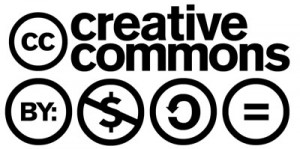Reading 03.1
Adrian Miles’ reading was useful to help me think about the following things:
Becoming a peer: The blogging world, and indeed the world of networks, is all about successfully participating as a peer. Sharing, linking, and commenting on other users’ content ensures that you are being an effective user and producer – or a ‘produser’ as Axel Bruns has described.
“To be ‘good’ at network literacies is to contribute as much as it is to consume.” – Adrian Miles
Print literacy vs network literacy: Print literacy is reinforced over many years of traditional education, with emphasis being placed on books, reading, writing and essay-writing being “the major forms for the expression of knowledge in the humanities”. However, with the rise of ICTs, knowledge is now being formed, shared and disseminated in drastically new forms, and we need to strengthen our network literacy skills and reinforce them in the same way that print literacy has embedded itself in our culture of learning.
RSS, tags, and folksonomies: These are all network tools which allow content to communicate between themselves and gather in locations other than where they were originally published. This allows for easier, faster and more efficient information flows between users, and it also allows the individual appropriation of content for different purposes.
Reading 03.2
I didn’t get around to reading all of Mark Smith’s article about Chris Argyris. From the brief scan I did, it seems to be about single-loop and double-loop learning, and I’m interested in learning what that means so I must remember to finish this reading next week.
Reading 03.3
In Paul Graham’s The Age of the Essay he gives a run down of the history of ‘the essay’, particularly how it’s used in education and how we inherited our traditional form of it. However he then goes on to explain to “give the other side of the story” about how essays can achieve different things if we write them well.
Essayer is the French verb meaning “to try” and an essai is an attempt. An essay is something you write to try to figure something out.”
Graham claims that “due to a series of historical accidents the teaching of writing has gotten mixed together with the study of literature”, meaning that essay writing has been devalued into something that is perceived as boring and pointless (to the masses). However, I found this idea problematic as I have always been one of the 0.00001% who loved my English studies in high-school, and essay writing in this style was always a favourite activity of mine. I am definitely familiar with the groans and mumbles about essay writing that came from my peers though, I just personally always thought that essay writing was a really beneficial activity that taught me some great skills such as critical thinking and the importance of good editing.
Graham advocates that essay writing should be about working something else, and that we should write them for ourselves to help this process occur, instead of writing them to prove a point or be convincing. He says that essays are about surprises, and “surprises are things that you not only didn’t know, but that contradict things you thought you knew.”
Where I did find myself fundamentally agreeing with Graham was in his insistence for encouraging people to ask questions. I’ve always been inquisitive, and used to thoroughly tire my parents out with question upon question when I was younger, and I believe that a questioning disposition can get you a long way.







